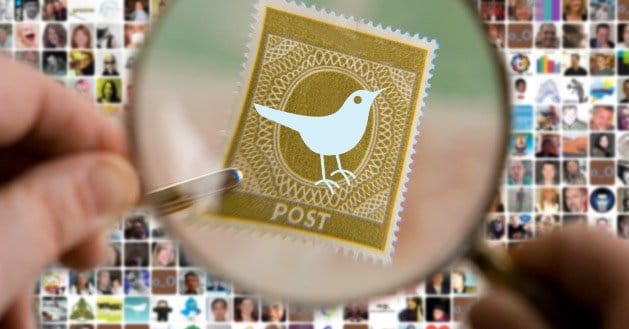 Written by ContentPowered.com
Written by ContentPowered.com
Twitter is becoming as important as Facebook in measuring your influence on the web, perhaps even more so. It is certainly rising in the ranks as the predominant social media platform, and anybody who is anybody needs to have a Twitter presence. However, it can be hard to measure your Twitter profile growth using only the ‘followers’ count, as a large number of followers are likely bots, and an equally large number isn’t your target audience that you will rely on to spread your message. Luckily, there are a number of completely valid methods for measuring your profile growth beyond follower count.
1. Measure retweets from your followers compared to your competition’s
In a niche market, examining your competition is an easy way to get ahead. Pick a name that stands out above the crowd that you would like to emulate, and monitor what they do in order to grow on Twitter. For instance, a lot of people look towards Alastair Humphreys in the travel blogging industry. With 16.1 thousand followers – and only following 756 people himself – Al is an influential name in the travel world. By imitating his methods, you can likely grow a large number of followers yourself.
However, measuring your own profile growth can be done simply by looking at your page. How do you compare to him in terms of followers? He’s certainly top-tier, but are you close? What about those who don’t follow you, but retweet you? They are reaching all of their own followers with your message. Continue sharing quality content, and you can convert some readers of those retweets into followers.
2. Count your retweets
While you may not always tweet each day, retweets are progress in your name that you don’t have to take care of yourself. When one of your followers retweets something you post, and their followers retweet that, and so on, it’s easy for a bit of content to go viral, giving you a surge in your profile. However, the number of retweets you receive can also be a measure of your profile growth. The more people who retweet you, the more people you have an influence over. And the more followers you gain who appreciate the content you provide, the more likely you are to receive more retweets.
It’s a sort of exponential growth pattern. The more quality content you provide, the more retweets you receive. In turn, you receive more followers, who then provide you with even more retweets. Twitter is a bit like a spider web; all the users are interconnected in some form or another (there are even a few bot accounts out there having a conversation with each other in a bizarre twist of programming), s the more people you can reach out to and influence, the more your influence grows.
3. Measure your Klout Score.
You can have 100,000 followers on Twitter with no influence of their own, and their retweets won’t make a shred of difference. However, if you have followers with massive audiences of their own, then their engagement with your tweets will be much more valuable than that of someone with no influence. If you don’t currently use Klout, it is available on Klout.com – the system measures how influential someone is based on how large their following is, how active they are, and the amount of audience engagement they receive on average.
In other words, someone who has Klout engaging your content will pay off. And as your Klout Score grows, you gain a much more detailed measurement of how your profile is growing, compared to if you’re just gaining followers or not. Keeping your most valuable followers in mind when you engage something on Twitter is a great way to ensure it spreads to the most people possible.
4. Compare your new users to your old users.
Is your profile growing, or are you simply cycling through accounts? If you tend to be volatile, sharing content of vastly different types, then it’s possible that you will lose followers just as you gain more. If you have an entirely different set of followers now than you did a year ago, it might be time to reconsider your methods. Your profile can’t grow if you have no long-term reach.
All the same, if you are a user of varied interests, you may have totally different followings on your profile that have no interest in what you share for the other group. Take travel and video games. The two aren’t commonly associated with one another; one group tends to be a bunch of home-bodies, while the other consists of adventurers and wanderers. If you share something about the latest development in gaming technology, the travelers are likely to look at it as a curiosity and shrug it off. The gamers, on the hand, will retweet it and spend days talking about it. On the other hand, if you share something relating to a new, warmer kind of tent, travelers will take an immediate interest whereas the gamers won’t know what to make of it. It’s important to keep the likes and dislikes of your audience in mind as you provide content.
5. Make sure you know how active your followers are.
What good does it do you to have thousands of followers if none of them are active? Similar to the Klout score earlier, a lazy army is as good as no army at all. If your followers rarely post, or post only their own content and never retweet yours, then it doesn’t matter how devoted they are – they do not contribute to the growth of your profile and influence in any way. Tools such as Simply Measured help you track the various metric related to your account and your followers, allowing you to see when they are most active. Posting at certain times of day may earn more engagement than others, for instance.
Just the same, know when your followers tend to slack off. Around the holidays, for instance, everything slows down – people don’t retweet as much content, content production slows, and everything goes into a bit of a slump. That doesn’t mean your profile isn’t growing, it simply means no one is very active. It’s important to know when the slumps occur so you get an accurate reading, and don’t begin to panic at the first sign of a potentially slow season.
There are many different tools and metrics that you can link your Twitter account to. Knowing the specific details and information is much more effective than knowing how many followers you have; these tools let you adjust your posting schedule, the kind of content you provide, and more. You can get a better understanding of what kind of content generates the most engagement and spreads the furthest compared to other kinds of content, and how you can best satisfy your audience and provide them with the sort of things they want to see. This applies to you no matter what industry you’re in, and as a marketer, it’s invaluable. Keep these five measurements in mind next time you want to track your growth; you might have more influence than you originally thought!

